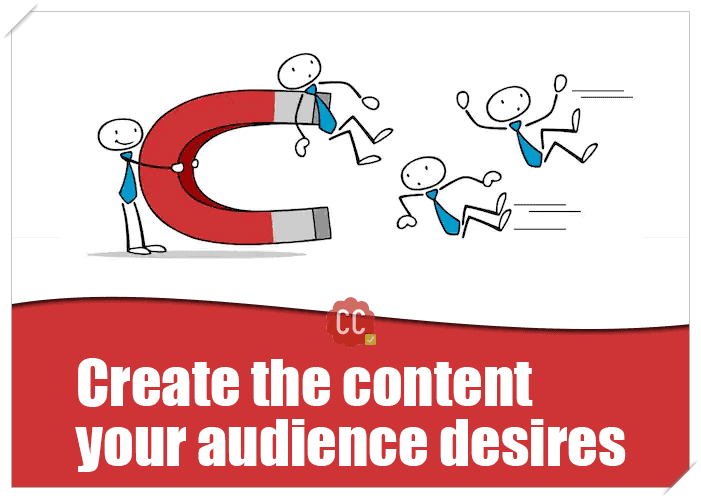How many times have you found yourself without inspiration and feeling unsure whether the content you want to create is going to attract your audience? Everyone has moments when we run out of ideas. Moreover, you may already publish content constantly and still feel that you don’t have the results you expected. One explanation might be that you create your content based on your assumptions and not on clear research.
This article is going to help you make your audience “hungry” for your content. It doesn’t matter if you own a small or medium business. These strategies work in any scenario. You just need to listen to your audience and you will see how easy it is to create “craveable” content. So, let’s get started!
Create Content Your Audience Craves For
Do you know how to use your analytics?
Analytics are the best tools to tell you what your audience likes best and how they react to different posts. Social media analytics will tell you exactly what type of content was preferred the most by your audience. For instance, it is very easy to check which were the most appreciated posts on Facebook. Just go to the Insights feature and you will immediately see which posts had the highest engagement rates. If you want to become viral on Instagram, then you should consider creating a business account. Once you have set up your account, the analytics icon will tell you which were the top posts that were sorted on different criteria like impressions, engagement, reach, and so on.
What should you do next once you identify your top posts? Of course, you cannot copy them and post them again. Your audience will become disappointed if you do so, discovering that you lack inspiration and you have nothing new to tell them. Therefore, if you want to follow the positive pattern, you should ask yourself the following questions before you create the next posts:
- What is the common topic among your top-rated posts?
- What is the source of your top content? Is it coming from your blog or from a specific publication?
- Is there a particular type of content performing much better than the others? For example, do the photos have bigger engagement rates than the videos?
- Which were the most interesting comments your followers left on the popular posts?
Find what your audience thinks!
Your analytics tools might be great, but they don’t tell you everything. So, what better source there is to tell you how to create content your audience desires if you don’t ask them directly? There are many ways you can find your audience’s opinion. For example, you can publish a poll on your social media profile and ask your audience to vote the type of content they like the most. Based on the results, you can adjust your content strategy.
On the other hand, you can also ask open questions. These questions will give you a lot of ideas for new topics you can address in your next posts. Furthermore, you can email your subscribers periodically and ask them about the type of content they liked the most on your website. This is how you will show your audience how important they are for you and how much you value their opinion.
Learn from your competitors!
If you don’t have enough time to use analytics tools and create an entire content strategy for success, then you can have a look at what your competition is doing. You did it when you created your products, so why not do it also when it comes to your content? Your competition already puts a lot of efforts into creating shareable content for their products. So, who says that you cannot have a look as well? There are plenty of tools you can find online to help you have a sneak peek on your competition’s most engaging posts.
On the other hand, you can learn from other companies even if they are not your competition. You most probably have your idols. You can learn from their success stories and discover what is their strategy to keep their audience engaged. You can have a look at general ideas and patterns and then adapt them to your brand specifics.
The sky is no longer the limit
The internet is full of mediocre content. Your competition is also producing average content which doesn’t make their audience vibrate with every word they read. So, you need to do something more than them and adopt the skyscraper technique. You should try to get out of the ordinary and become known on the market with amazing content. How do you do it? It’s not that complicated!
First, you should find which is the most popular content. Once you have identified it, use that content to create a better version of it. If you know which is the topic that attracts your audience, then you can enhance your content with relevant keywords. Therefore, you increase your content’s visibility. Keywords will also help you identify even more popular content which you can then enhance and surprise your audience with useful and informative content.
Create marketing personas
Creating a marketing persona will help you identify exactly what your audience wants to receive from your side. You already know what type of products your audience wants to buy from you. So, now you need to find out how to make them follow your page and come back for more products and information. Without a marketing persona, you will only guess what your audience expects from you in terms of content. This might affect your inspiration as you might be creating content around the topics that you know best. A marketing persona, on the other hand, will help you get out of your comfort zone and create content that wows your audience.
If you really want to have success with your content, you need to separate yourself from the competition. They might be doing an excellent job. However, this doesn’t mean that you don’t have anything new to say. On the contrary, their ideas can be an excellent source of inspiration for you. Your content is an excellent tool which you can use to express your personality, humor, and ideas.















